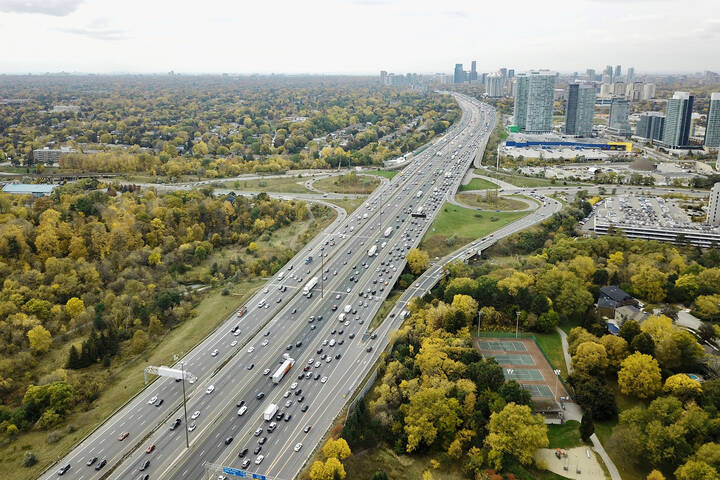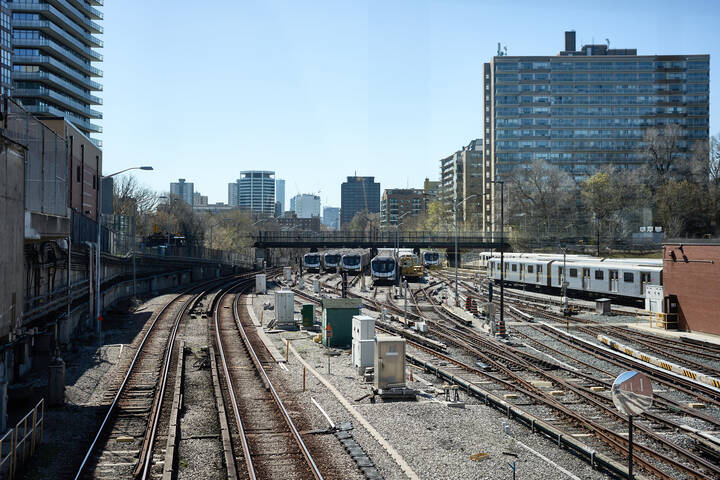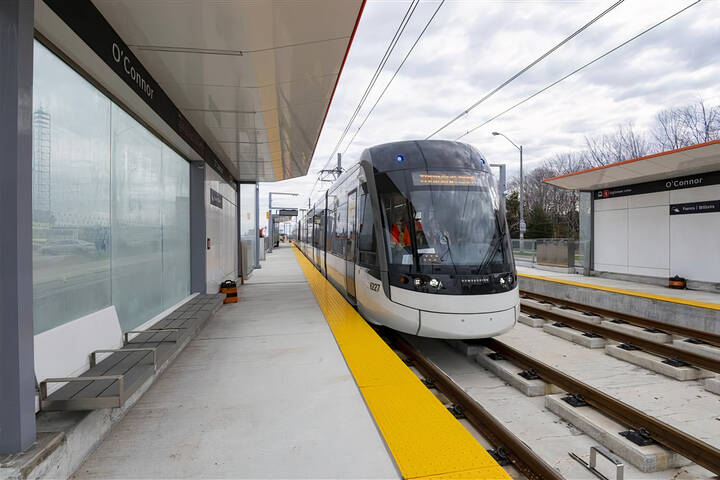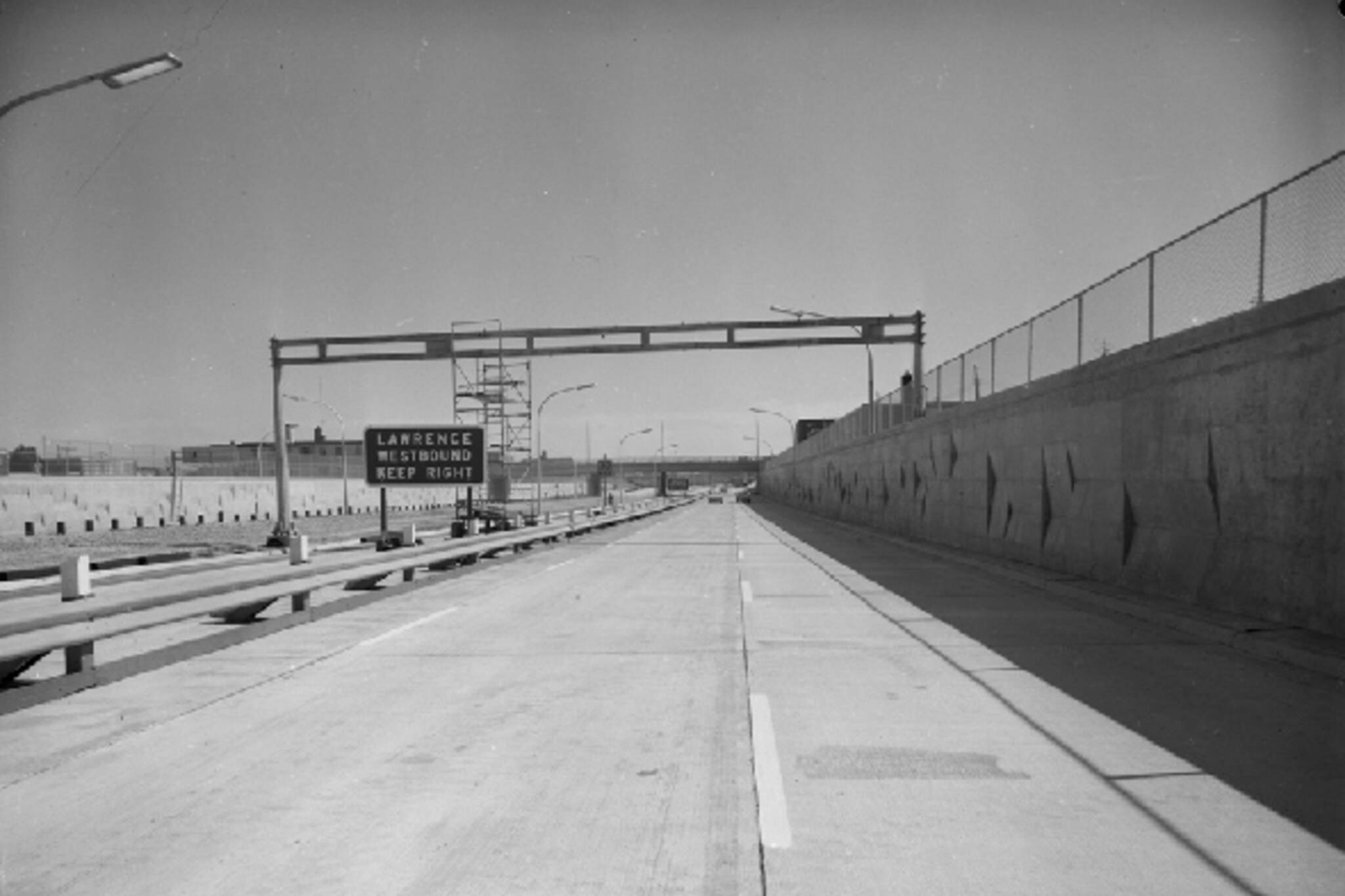
These unbuilt streets almost changed Toronto entirely
Toronto has a robust archive of scrapped projects that would have dramatically changed the city, from abandoned transit lines to soaring skyscrapers. Some of the most intriguing entries in our unbuilt legacy, however, are streets and highways.
The road grid in this city is far less static than one might imagine, even if some of the most grandiose ideas for changing it were ultimately shelved.
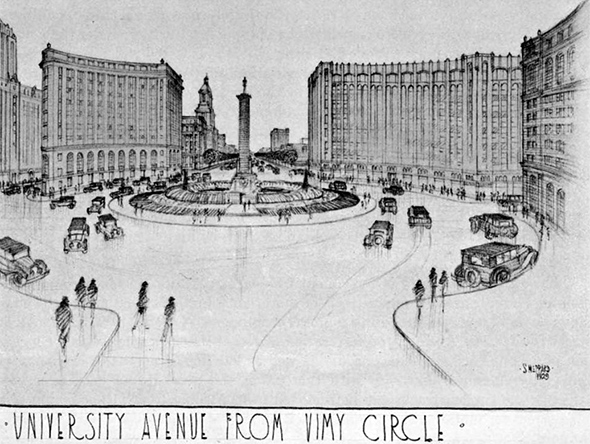
Perhaps the most dramatic of these plans was for Vimy Circle, a roundabout that would have been located at the intersection of University and Richmond. At the centre of this grand circle city planners envisioned a war memorial and public space.
In fact, Vimy Circle was one of a number of plans in 1929 to alter the Toronto road map in a major way. Planners at the time complained that the city was "not providing any open spaces, or the beautifying in any considered way of the downtown business area."
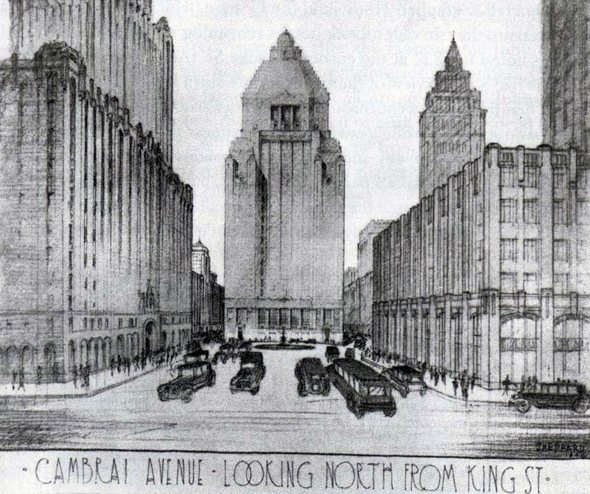
As such, another grand thoroughfare was proposed under the name Cambrai Avenue. Plans for a street here went back a while, but construction of new buildings in the early 1920s thwarted the route of what was then known as Federal Avenue.
Plans for the street were reborn at the close of the decade under the new name. It would have started at Front St. immediately to the east of the recently completed Royal York Hotel and run north to Queen Street, circling around existing buildings and a proposed new skyscraper and plaza near Richmond and Adelaide streets.
The third element of this plan was Paschendale Avenue, which was to cut southwest from Vimy Circle before terminating at Clarence Square Park near Spadina and Wellington. Also named after a World War I battle site, the street was less grand in stature, but would have completely rewritten the east west grid south of Queen St.
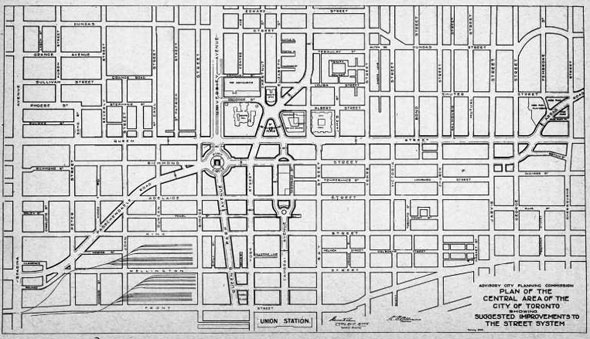
All three of these projects were ultimately scraped on account of a lack of public will to fund them. Back then, matters of major municipal expansion were often subject to referendum, with this one added to the municipal ballot in 1930. It was ultimately defeated.
Fewer people know that College St. was once also the subject of major expansion plans. The street currently terminates just past St. Helen's on account of the rail lands that begin immediately to the west, but the influential Denison family once called for its extension all the way to High Park, where it would serve as a grand entranceway.
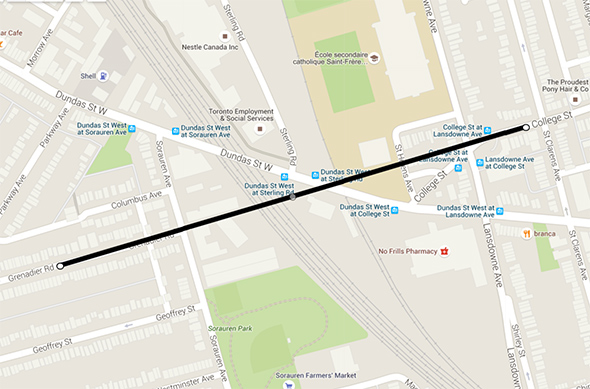
A quick look at a map reveals that College is almost perfectly inline with Grenadier Rd. The idea was to connect the two streets, but the plan never came to fruition on account of the complications of spanning both the railway and Dundas St. West, which would have had to cross College on its passage northwest.
Speaking of Dundas, it too was the site of ambitious plans for a promenade in the early 1960s. The walkway would have stretched from University to McCaul Ave. and provided a dramatic introduction to the AGO. You can still see signs of this scheme in the way that 52 vision is well setback from the street. This is where the promenade would have been.
This ill-fated project came close to realization but ultimately stumbled when planners were unable to secure all the properties along the route. By the time the Village on the Grange was built, any hope of the pedestrian promenade was dashed.
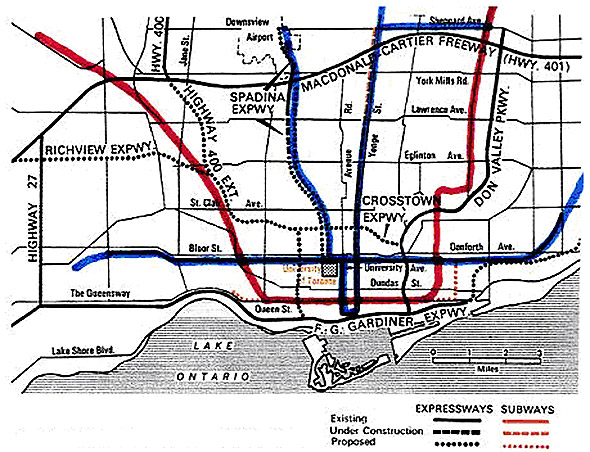
No discussion of unbuilt Toronto streets would be complete without mention of the Spadina Expressway, the nearly disastrous project that would have run south from the current day terminus of Allen Rd. through Cedarvale before connecting with Spadina Rd. just north of Dupont St.
Public opposition led by Jane Jacobs and former Toronto Mayor John Sewell ultimately won the day and the province cancelled the southern extension of the project in 1971 (Allen Rd. is what remains of the plans), but this was a very loud warning that suburban and urban councillors on what was then called Metro council had different values when it came to mega infrastructure projects.
That tension remains post-amalgamation years on city council. Getting major new projects such as these approved has never been more difficult. In some respects this is a good thing as poorly conceived projects face increased scrutiny, but it one can still wistfully imagine what Toronto would have been like with the European-styled avenues proposed in the 1920s.
Lead photo from the Toronto Archives.
Latest Videos
Latest Videos
Join the conversation Load comments

